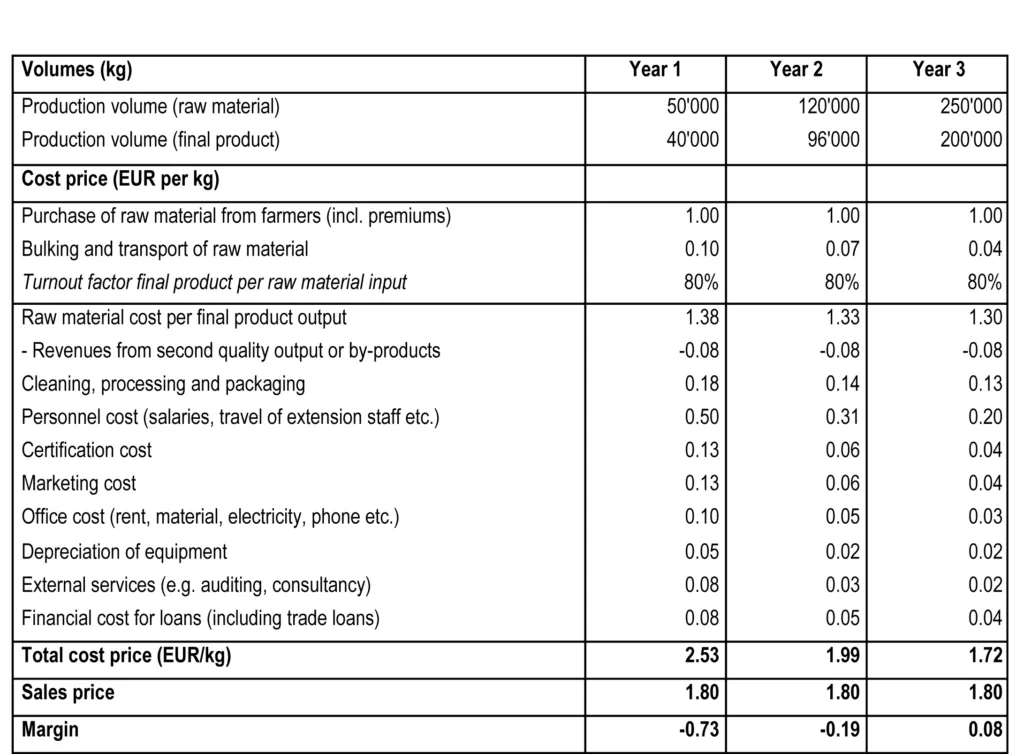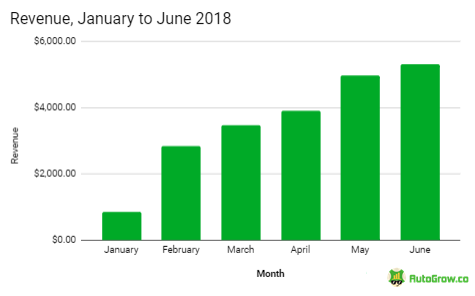5 BIG Startup Mistakes From Entrepreneurs Who Would Know
This article is slightly painful to write, but I know I need to share it.
It’s like that line in Iron Man 3 where Tony Stark narrates: “A famous man once said, ‘we create our own demons.’”

I think that’s true, but it’s especially true in the world of startups.
When you’re a startup, there are no excuses, and you have to take responsibility for everything that goes wrong…
Or fail by ___________.
And that’s a key mistake we’ll go over below.
This list of 5 startup mistakes isn’t just from my experience (most of them at least). They are common to 100’s of other startups around the world, started, grown, failed, almost failed — Every. Single. Day.
I’ve included quotes and citations of other entrepreneurs — like Elon Musk and Dan Kennedy — who’ve openly blogged about making these mistakes, or who emailed us for this article.
Why read an article about startup mistakes?
Simple.
- You might be making these mistakes and may not realize it.
- You may not know how to solve them.
- You may be at risk of making them in the future.
Being aware of each potential error will help you make smarter decisions in the future.
Below, I’ll go over each in detail. I’ll also explain how to solve each one if it comes up in your startup journey.
Onward to success!... Let's sidestep these obstacles.
Receive a copy of the article to read later
Mistake #1 — Losing $ Because You Ignore (Simple) Math
Break out the spreadsheet you have.
You know, the one where you have all your monthly expenses broken down, both variable costs and fixed costs. The one where you know exactly what it costs to acquire and deliver the product or service to each customer.

(Source)
The one that says exactly how much each customer or client is worth…
Along with your profit margin…
You know, profit = revenue (minus) expenses.
What? You don’t have that?
Then you’re probably making this mistake.
“You can design your business so it’s impossible to lose money”.
That was the same suggestion of a friend my first year in business in 2010. He was an experienced entrepreneur so I took his advice.
It turned out, the solution was simple math.
I took out a notepad and wrote down all our overhead costs, and then compared it to the revenue and costs of selling our service.
From that moment on, we stopped losing money and started making a profit every month.
The profit was modest at first, but it grew and grew over time.
It made sure there was always money in the bank.
This is key because cash is like oxygen to a startup.
If you run out of oxygen, you die.
Solution: Breakout a spreadsheet and do the math. Like a compass pointing north, knowing your monthly breakeven number gives you a minimum goal to aim at.
Or as Ariana Odell, founder of the AirLink Marketing agency put it in a recent article on Inc:

“When you commit to running a business, it's important to first get your finances in order and figure out exactly how much money you need, how much runway you have, and how much credit you have at your disposal for emergencies.”
Mistake #2 — Paralysis by Analysis (Trying to Get It Perfect, Instead of Getting It Done)

If you create a perfect website with the perfect productized service...
Or, you create a software product but don’t launch or don’t promote it…
Why? Well, of course, because you need it to be that super-awesome-amazing-ultimate vision you have in your head.
The solution is to simply LAUNCH…
Or is it?
Here’s where it gets a little confusing. The entrepreneurial journey IS confusing!
You don’t want to be held back by overthinking things.
You want to get it out there.
But, should you simply be launching or marketing, just so you can call it “done”? Meanwhile, the product or service you launched isn’t that great, it’s rushed…
But then the opposite end of the spectrum is, ok, avoid paralysis by analysis, and take action. But, you overfocus on your product and launch too late.
This can mean you’ve:
- Run out of money or
- Missed your window of opportunity or
- Made too many assumptions about what the market needs and now your product or service is too complex…
So if simply taking action in one direction or the other isn’t the answer, then what is???
This problem is what I called the “Paradox of Product”.
Too much product development and not enough marketing, you fail.
Too little product development and too much marketing results in unsatisfied customers and won’t win in the long term.
The answer is to strike a balance between product and marketing.
Especially if you’re bootstrapping your business with limited time and cash.
50% goes to product development (or optimizing how you deliver your service to clients), and 50% goes to marketing.
At different times in your journey, you may need to shift the balance of weight from one end to the other. However, generally speaking, a 50/50 average is the winning formula.
Solution: Launch! Launch even when it isn’t perfect. But don’t deliver poor quality product or service on purpose.
Donna Fenn, Content Marketer and Founder of Alpha Dogs Media group comments on the issue:

“It's very easy to fall into the 'features and design' loop, up to a point where you justify the work with the assumption that more clients will be interested in a 'prettier' product.”
Mistake #3 — Firing Too Slow, Hiring Too Fast
I used to ignore the cliche phrase: “hire slow, fire fast”.
But not anymore…
A little while back, I had a content editor I was working with. Her job was to help me publish more content with fewer mistakes.
The problem was, there were too many mistakes.
Still, I kept her on hoping that my guiding and coaching her would improve the results.
It did not. But still, I kept her on.
Some months later showed up to a team chat, said she was quitting, and that day would be her last.
In our contracts with team members, we require two weeks notice.
The worst part was a month later we found an anonymous review (from her) on a jobs board website. She was clearly bitter and wanted to hurt the company.
As a result, it contained numerous false statements designed to hurt the company. We ultimately had to get a lawyer involved and the review was quickly removed.
Still, the situation was my fault (more on that later in this article).
This was someone who showed many warning signs and whose work didn’t improve over the course of time. But I didn’t fire her.
Why? I was concerned about the “headache” (process) of finding someone new.
- It would take too long...
- Maybe she’d improve…
- I’ll do it next week…
All rationalizations that didn’t change the fact that she wasn’t able to fulfill the role we had hired her for.
Yet, I let it go on for six months and ultimately had to pay a worse price in the form of time lost later on.
This reminds me of what Dan Kennedy, entrepreneur and famous for his copywriting ability once said:

“...the average firing occurs somewhere between six and 18 months after the business owner knew the employee was consistently performing poorly, consistently noncompliant, poisoning the workplace and negatively affecting others in it…”
I’ve interviewed and hired a lot of different people over the years: designers, developers, sales people, and project managers.
What I learned from those experiences is that the cliche is true and you should follow it.
Here’s why:
- In any interview, the person is usually trying to sell you on why you should hire them. This is good, normal, rational behavior. It is to be expected, and if someone doesn’t that might actually be a red flag. But your interview with someone is simply not an accurate reflection of what it’s like to actually work with them.
- Working with someone is when their true character comes out. We walk around wearing “metaphorical masks” all day to project a positive image of ourselves—but also to protect our own ego. Because we’re never as “awesome” as we may try to convince ourselves that we are.
- Great characters get results and take total ownership. People who take total responsibility for their job and the results they do or do not get are the best kinds of people to work with. Why? Because they usually get results, they are consistent, dependable, and when they make mistakes (and they will), they own that too. And they even learn and get better as a result of their mistakes.
Interviews tell you so little about a person. It is only after you “give them what they want” (the job) that you’ll see what they’re truly made of.
Do they get the job done?
Or, do they drop their guard and reveal, the best thing about them was how they sold themselves in the interview?
A few quick tips for managing your risk when hiring people:
- (Elon Musk partly gave me this insight) Ask people to explain how they solved a difficult problem. If they are competent at what they do they’ll be able to describe it in detail. Showing enthusiasm in describing how they solved it (their eyes “light up” a bit) is also a positive sign.

"Tell me the story of your life and the decisions that you made along the way and why you made them and also tell me about some of the most difficult problems you worked on and how you solved them…” - Elon Musk, talking about what he asks when interviewing people (source: CNBC)
- Learn to hire people slow (on a trial basis). Inform people after you hire that you’ll be results focused. Specifically, in your mind, you need to look at it as a trial to hire for the first 3-6 month. This means you’re looking at how you communicate, collaborate, and otherwise cooperate together and as part of your overall team to get a result. Consider giving a monetary bonus to people who make it beyond the 3-6 month mark. Call it an “appreciation bonus.” Its effect will be more powerful if they don’t expect it and you don’t tell them they were on a trial after you hire them.
- Always have back-ups. Create a recruiting system that ensures you always have back-up candidates if you need to replace someone. Recruiting is a time-intensive process. It’s a bad position to be into unexpectedly need to fill a team role. Or, worse, not firing someone because you don’t want to go through the process of hiring.
Solution: Hire slower, fire faster.
Here’s another entrepreneur whose business was almost killed as a result of not firing faster:

”Firing is a necessary evil if you want to keep moving your company in the right direction”.
— Eric Siu, Founder of SingleGrain
 “To sustain hyper-growth, it’s essential to 'get rid' of the weight that is holding your business back. However, doing this is one of the toughest decisions to make as a manager… Hiring too quickly can also affect your ability to maintain the company’s DNA and values as you grow”.
“To sustain hyper-growth, it’s essential to 'get rid' of the weight that is holding your business back. However, doing this is one of the toughest decisions to make as a manager… Hiring too quickly can also affect your ability to maintain the company’s DNA and values as you grow”.
— Sagi Gidali, Co-founder at Perimeter 81 & SaferVPN
Mistake #4 — Charging Too Little

Charging less (or a small amount) can dramatically grow your conversion rate.
I’ve talked about why you’d want to do this in my past articles on upselling and tripwires.
When I launched our “Done-With-You” funnel service back in 2015, it was the first service of its kind.
A few others have tried to copy it since then with little success.
This was the 2nd 6-figure sales funnel (i.e. sales funnel that generated $100,000+ in revenue per year) I had built for our own business at the time.
I launched it and our entry level price at the time was just $99 per month.
Comparing that to the nearly $2,000 per month entry-level price we later charged, it was extremely cheap.
It was a test though and I wasn’t sure what to expect.
People started signing up on the first day. A big reason was the price point.
The problem was, we grew to 25+ clients practically overnight. By then, I realized two things:
- The scope of work wasn’t well defined enough. And…
- We were charging too little for the effort and skills required.
Not only was it difficult to adequately compensate team members and turn a profit, but I was the one answer client’s strategy questions.
My answers were good, but it made the business impossible to scale.
For a while, we were trapped by our own low price points.
When I launched our new “Done-For-You” productized service over a year later, we provided more value but we also charged a lot more.
Don’t make the same mistake.

Here’s another entrepreneur that agrees:
"It wasn’t worth charging a low fee just to keep a lead from walking away”.
— Taryn Wood, Editor at Medium.com
Oh, and the same applies if you’re selling products. Many of our happiest customers are the ones who pay the most.
And in the past, when I’ve consistently raised prices on our most premium training, for example, sales would actually go up, and so would customer satisfaction (i.e. zero refund rates).
Conversely, I’ve noticed that people who receive a one-time discount are more likely to request a refund.
Solution: That answer isn’t always “charge more”, nor is it that discounts are “bad.” All businesses are different. The key is: charge enough to be profitable and provide a good product or service.
Mistake #5 — Prioritizing Growth Over Customer Retention

“Putting a higher premium on customer acquisition than customer satisfaction is short-sighted.”
— Emily Triplett Lentz, Blog Editor and Content Manager at HelpScout
In 2018 I switched AutoGrow from services over to products.
I practiced what I preached and our revenue grew like clockwork.

This growth was exciting…
However, I soon realized that, unlike when we were selling services and we charged monthly, each month we were starting from zero. This was because all our product were a one time fee.
On a personal level, this "starting from zero" (while doing a very public, monthly growth report) became extremely stressful.
I felt the need to push myself harder and harder each month so that revenue would grow.
I eventually stopped creating and launching new products. Instead of focusing on retaining our existing customers, I focused on marketing harder to get new customers.
As a result, we started receiving some complaints from our email subscribers that we were emailing too often.
This, combined with exhaustion (I was burned out after a while), and being more aggressive in our marketing caused us to show our first drop in revenue after 7 months of straight growth.
A year later, things are back on track. We’ve since launched two new products, and we’re going to be testing our first monthly membership offer very soon.
With a monthly offer my focus can shift to retaining customers, which means more investment for longer-term buyer relationships.
Solution: The lesson here is to focus on your customers, on satisfying and retaining them, and less on raw revenue numbers. Raw revenue is not a reflection of long term sustainability.

“Retention is the King”. — Aladdin Happy, Founder of GrowthHackingIdea
Conclusion
Here’s a quick recap:
- Mistake #1 — Losing $ Because You Ignore (Simple) Math.
- Mistake #2 — Paralysis by Analysis (Trying to Get It Perfect, Instead of Getting It Done).
- Mistake #3 — Firing Too Slow, Hiring Too Fast.
- Mistake #4 — Charging Too Little.
- Mistake #5 — Prioritizing Growth Over Customer Retention.
That’s just five mistakes but there are many others.
I may update this article again soon so be sure to subscribe if you’d like to hear about that.
Which one did you relate to most from this article?
What others can you think of that I should add here?
Leave a comment and let me know.
![]()

















